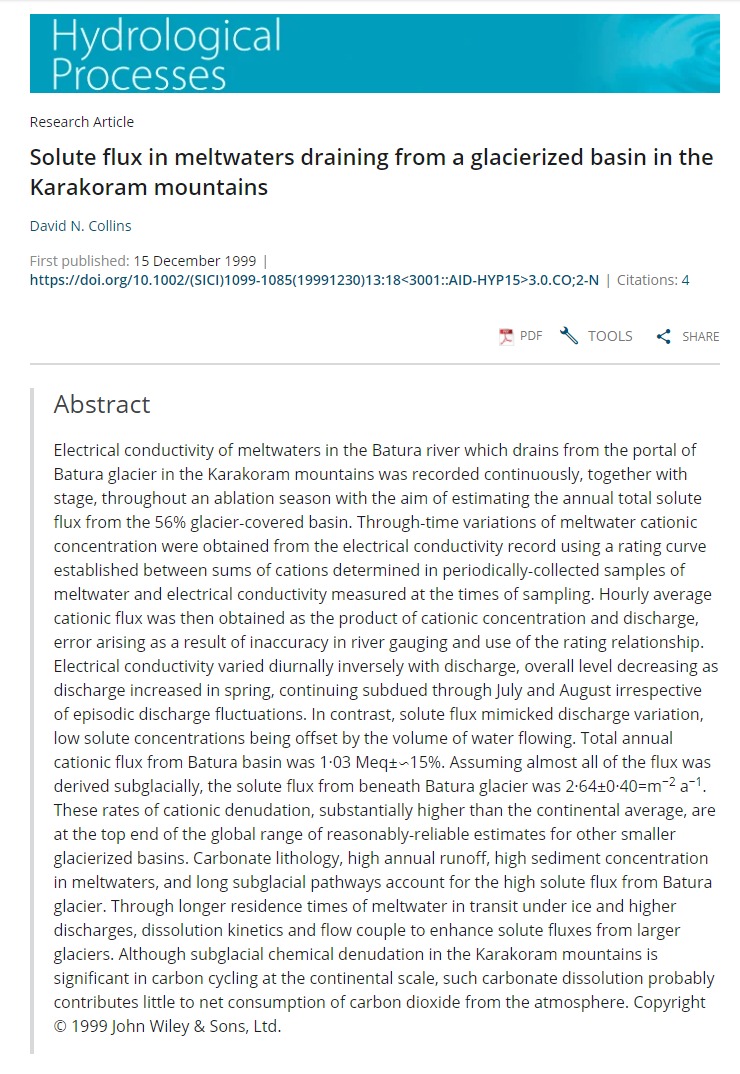
Electrical conductivity of meltwaters in the Batura river which drains from the portal of Batura glacier in the Karakoram mountains was recorded continuously, together with stage, throughout an ablation season with the aim of estimating the annual total solute flux from the 56% glacier-covered basin. Through-time variations of meltwater cationic concentration were obtained from the electrical conductivity record using a rating curve established between sums of cations determined in periodically-collected samples of meltwater and electrical conductivity measured at the times of sampling. Hourly average cationic flux was then obtained as the product of cationic concentration and discharge, error arising as a result of inaccuracy in river gauging and use of the rating relationship. Electrical conductivity varied diurnally inversely with discharge, overall level decreasing as discharge increased in spring, continuing subdued through July and August irrespective of episodic discharge fluctuations. In contrast, solute flux mimicked discharge variation, low solute concentrations being offset by the volume of water flowing. Total annual cationic flux from Batura basin was 1•03 Meq±∽15%. Assuming almost all of the flux was derived subglacially, the solute flux from beneath Batura glacier was 2•64±0•40=m−2 a−1. These rates of cationic denudation, substantially higher than the continental average, are at the top end of the global range of reasonably-reliable estimates for other smaller glacierized basins. Carbonate lithology, high annual runoff, high sediment concentration in meltwaters, and long subglacial pathways account for the high solute flux from Batura glacier. Through longer residence times of meltwater in transit under ice and higher discharges, dissolution kinetics and flow couple to enhance solute fluxes from larger glaciers. Although subglacial chemical denudation in the Karakoram mountains is significant in carbon cycling at the continental scale, such carbonate dissolution probably contributes little to net consumption of carbon dioxide from the atmosphere.